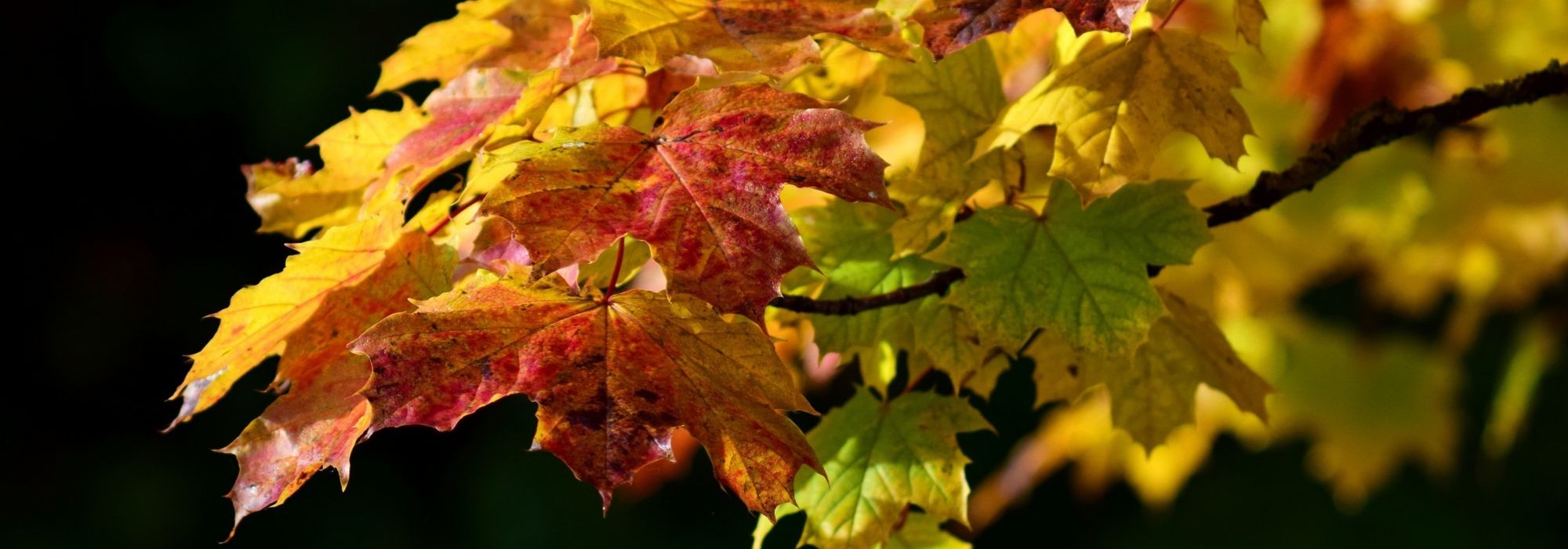
Maples: planting, pruning and care
Contents
Maple, in a nutshell
- Maples are trees or bushes noted for splendid autumn colours and sometimes for bark resembling snakeskin or peeling.
- Single or compound leaves are arranged in pairs and are generally deciduous, with an impressive variety of shapes and textures.
- Fruits with two wings display beautiful bright red colouring before browning, and sometimes form long clusters.
- These trees are generally very easy to grow in cool, moist temperate climates and in well-drained soil.
A word from our expert
Maples or Acer are beautiful forest trees or bushes indispensable in gardens, whether large or modest in size. They offer a festival of colour whether through the mottled bark of so‑called “snake‑skin” maples, the brilliance of juvenile foliage followed by an intense green, purple or cream variegation, then in autumn by a wash of foliage colours sometimes golden yellow, sometimes turning scarlet. Opposite, lobed, dentate or palmate leaves provide an interesting graphic and variable shade depending on lamina size. Large species are exploited for their wood even though they grow mixed with other leafy species.
We will not discuss here the Japanese maples, which form a world of their own with a multitude of cultivars.
With growth ranging from fairly rapid to slow and generally very hardy, down to -20°C, maples are easy to grow. They prefer rich, deep, fresh, humus-bearing, acidic to neutral soils, in full sun or partial shade. However some species such as Montpellier maple (Acer monspessulianum) or Cappadocian maple (Acer cappadocicum) are perfectly adapted to dry summers and populate garrigue, scrub vegetation or fallow areas with soils of varied pH.
Pruning consists of removing old shoots that are in excess or poorly formed, generally in winter. With varied habit, maples can be used in every corner of the garden: as specimen trees, in hedges, in borders, within a collection of notable trees or in a grove. Some species are perfect for cultivation as bonsai or in pots.
Description and botany
Botanical data
- Latin name Acer
- Family Sapindaceae
- Common name Maple
- Flowering between March and June depending on species
- Height between 3 and 30 m
- Exposure full sun or partial shade
- Soil type any deep, well-drained soil, even chalky
- Hardiness Excellent (below -20 °C)
Genus Acer comprises nearly 160 species, all native to Northern Hemisphere and most originating from China. Europe hosts only a few species, present in forest such as sycamore (Acer pseudoplatanus), Norway maple (Acer platanoides), field maple (Acer campestre) and Montpellier maple (Acer monspessulanum), while North America counts around ten species. Maples belong to family Sapindaceae, formerly treated as Aceraceae.
Large maples such as sycamore (Acer pseudoplatanus) exceed 20–30 m with life spans longer than 500 years, but many species and cultivars have a moderate size of 5 to 10 m suitable for planting in an average garden with a shorter life span. Japanese maples, restricted to acid soils known as « terre de bruyère », are treated in another article, as they form a separate category.
Maples show a wide range of habits, from columnar (Acer platanoides ‘Columnare’, Acer saccharinum ‘Pyramydalis’) to globose (Acer platanoides ‘Globosum’), including rounded forms (Acer campestre, Acer platanoides ‘Drumondii’) or more open, spreading shapes as in Acer saccharinum ‘Laciniatum Wieri’, which bears long, pliant branches at an angle.
Some maples are described as “variegated” or “snake-skin” owing to young bark with olive-green or red, scale-like striations of cream that persist for varying lengths of time. Trunk of Acer davidii becomes scaly and brown with age, unlike that of Acer capillipes, Hers’s maple (Acer davidii subsp. grosseri) or Acer maximowiczianum. Paperbark maple (Acer griseum) is another outstanding example among Chinese maples with its peeling reddish-brown bark contrasting with its three-foliolate, crenate leaves of deep green. Terminal bud of maples, developing into an inflorescence, often produces a forked branching habit.
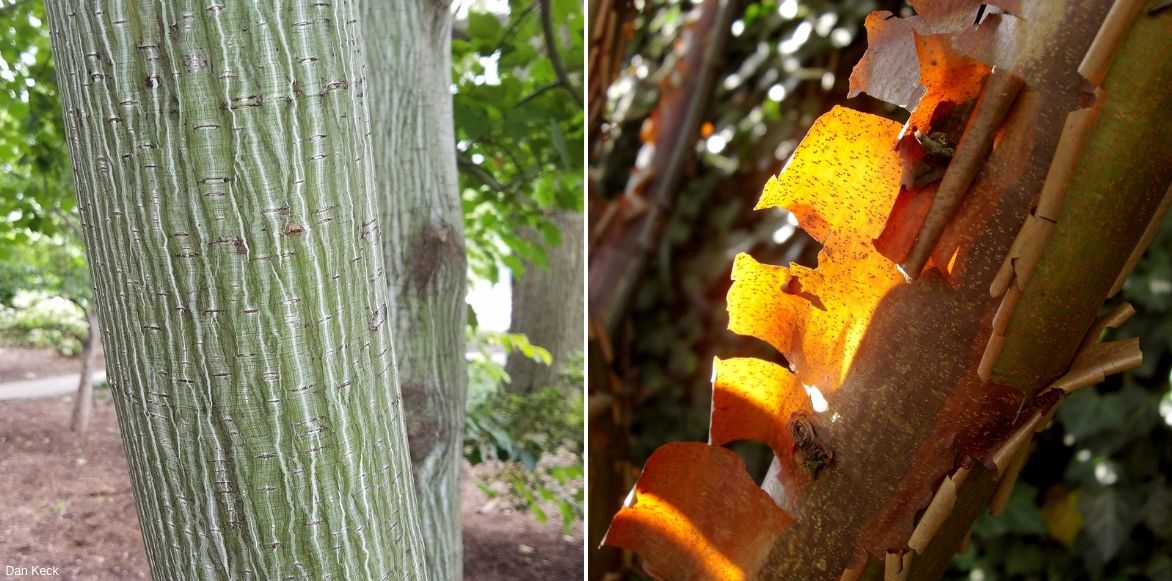
Remarkable barks: Acer davidii and Acer griseum
All maples have leaves borne on a long petiole and arranged opposite, a character relatively rare among deciduous trees — also seen in ashes, recognisable by their black buds — which helps identify them even in winter from bud arrangement. Leaves are compound on Acer negundo, but this is almost the only commonly planted species (alongside Acer griseum and Acer triflorum) showing that trait. Other species have simple, palmatilobate leaves (3 to 9 lobes), coarsely dentate in Acer platanoides, which resembles plane leaf. Another distinguishing feature: in the latter, veins are radiating (palmate) instead of being pedate (offset). Acer ginnala bears trilobed, toothed leaves with a red petiole, while Acer monspessulanum has rather small, three-lobed entire leaves evoking a bird’s foot.

Some maple leaves: Acer platanoides, Acer negundo ‘Flamingo’, Acer ginnala and Acer platanoides ‘Crimson King’
Leaf colouring is enchanting from spring when young shoots emerge pink-golden or red. In autumn, trees display intense colour ranges, often glowing red as shown by images of sugar maple (Acer saccharum) forests during famous Canadian Indian summers. Acer pseudoplatanus ‘Brilliantissimum’ turns a delicate shrimp-pink at bud burst before greening, while Acer × zoeschense ‘Annae’ unfurls dark red foliage. Cultivars exist with purple leaves (Acer platanoides ‘Crimson King’) or cream-variegated foliage (Acer negundo ‘Flamingo’ or ‘Aureomarginatum’). The latter are often trained as multi-stemmed specimens to enliven a coloured-leaf hedge. Acer × conspicuum ‘Red Flamingo’ is a recent hybrid with green leaves splashed with pink in spring, cream in summer and turning orange in autumn, additionally bearing a red variegated bark and red young shoots.
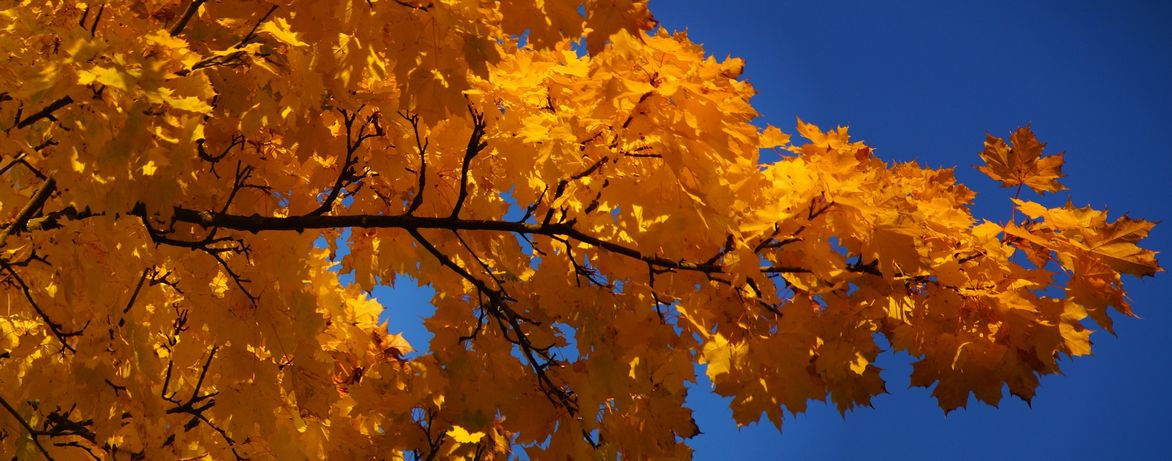
Autumn colour
Maple flowering is not particularly showy; it takes place before or during leafing according to species, as clusters of fairly small flowers, yellowish or red in Acer rubrum, often hidden by foliage. Male flowers form glomerules of stamens. Flowers with five sepals and sometimes five petals (occasionally absent) are hermaphrodite or unisexual on same plant or on different plants. Pollination is by insects or wind.
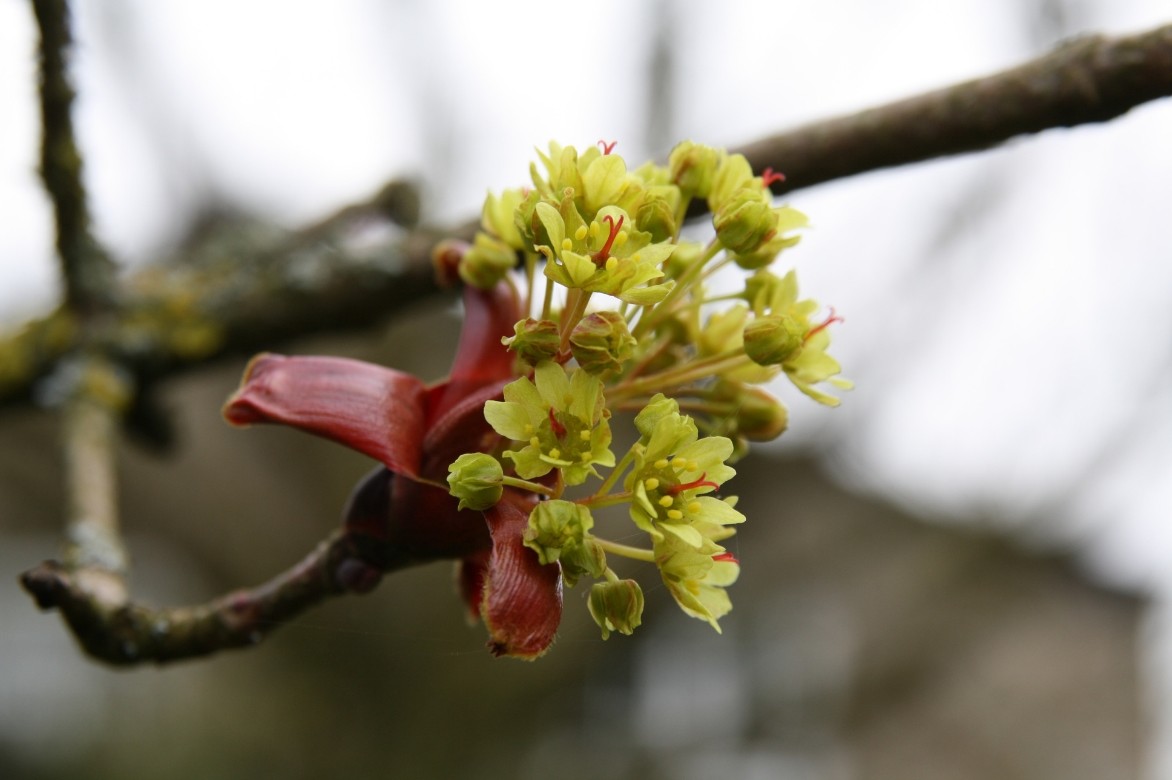
Flowering of an Acer platanoides ‘Crimson King’
Resulting fruits are pairs of samaras 3 to 10 cm wide, made of two achenes each with a wing, associated in pairs (sometimes in threes) and showing wings more or less spread apart (angle between wings is a distinguishing character of species). Acer negundo and A. henryi produce long, very decorative clusters of fruits. Fruits provide food for many birds.
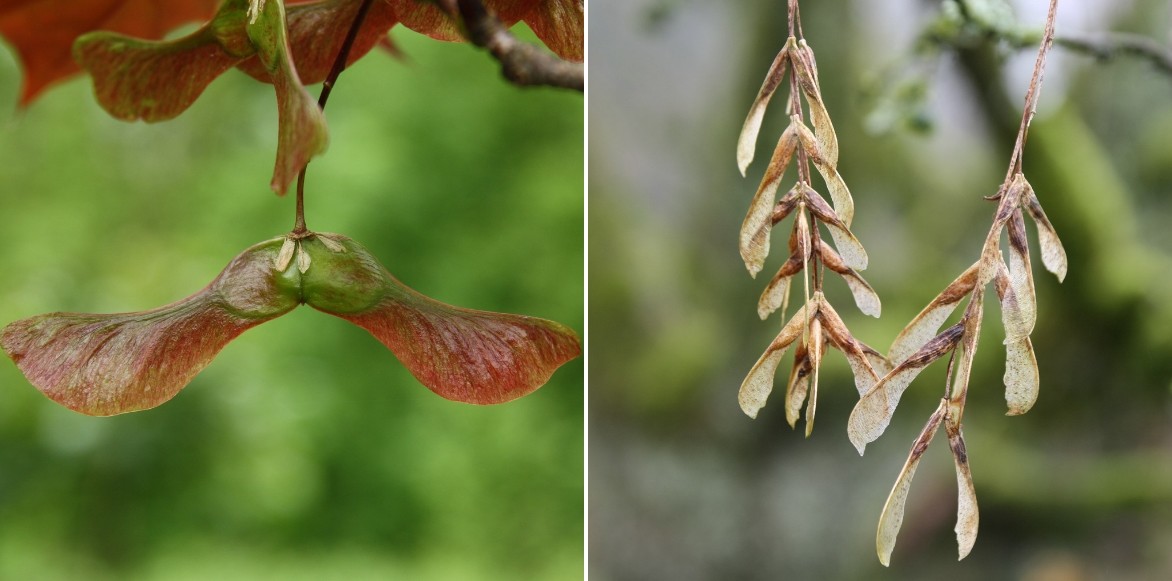
Fruits of Acer platanoides ‘Crimson King’ and Acer negundo
Wood is fairly pale with a consistent texture and hardness varying by species. Sycamore (Acer pseudoplatanus) yields hard wood used in lutherie. Fine grain of Acer platanoides is used for parquet, furniture, interior joinery… and also for fuel.
Sap of sugar maple is tapped to make syrup or maple sugar in spring before leafing.
Read also
Create a Japanese or Zen gardenMain maple varieties
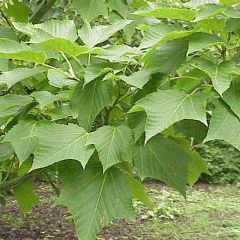
Acer capillipes - Maple
- Flowering time May
- Height at maturity 9 m
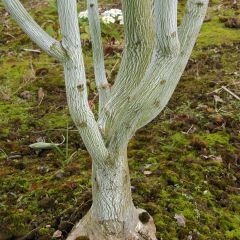
Acer davidii Viper - Maple
- Flowering time May
- Height at maturity 4 m

Acer griseum - Paperbark Maple - Maple
- Flowering time May, June
- Height at maturity 6 m
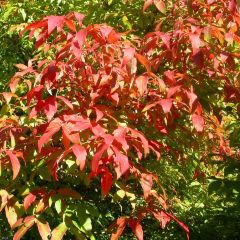
Acer triflorum - Maple
- Flowering time May
- Height at maturity 8 m
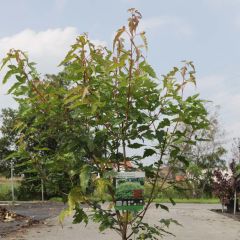
Acer tataricum subsp. ginnala Bailey Compact - Maple
- Flowering time May, June
- Height at maturity 2,50 m
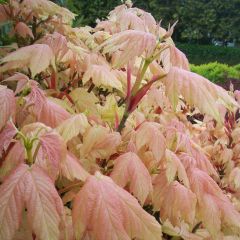
Acer pseudoplatanus Brilliantissimum - Maple
- Flowering time June
- Height at maturity 7 m
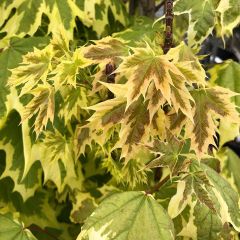
Acer platanoides Drummondii - Maple
- Flowering time May, June
- Height at maturity 15 m
Variety with ball-shaped habit
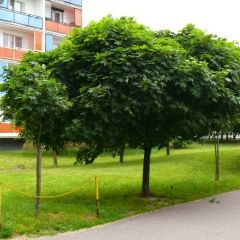
Acer platanoides Globosum - Maple
- Flowering time May, June
- Height at maturity 8 m
Discover other Acer - Maple tree
View all →Available in 6 sizes
Available in 1 sizes
Available in 1 sizes
Available in 1 sizes
Available in 1 sizes
Available in 1 sizes
Available in 1 sizes
Available in 3 sizes
Available in 2 sizes
Available in 3 sizes
Planting maples
Where to plant maples?
Choose a sunny or semi-shaded but bright spot for most maples. Those with mottled bark that require cooler conditions tolerate full sun less well.
Generally, autumn colours are more intense in sun but soil dryness also influences colour, as with sycamore and field maple which are more colourful in dry soil. pH also affects production of anthocyanins pigments, which appear bright red in acidic soil and violet in calcareous soil.
Soil must be deep and cool all year round, without excess calcareous material for most species. However Acer pseudoplatanus, Acer platanoides, Acer campestre, Acer monspessulanum, Acer cappadocicum, Acer ginnala, Acer negundo, Acer saccharum grow equally well on acidic, neutral or calcareous soil and even on dry, stony soil, except the first two.
Avoid exposed, windy sites and locations subject to sea spray.
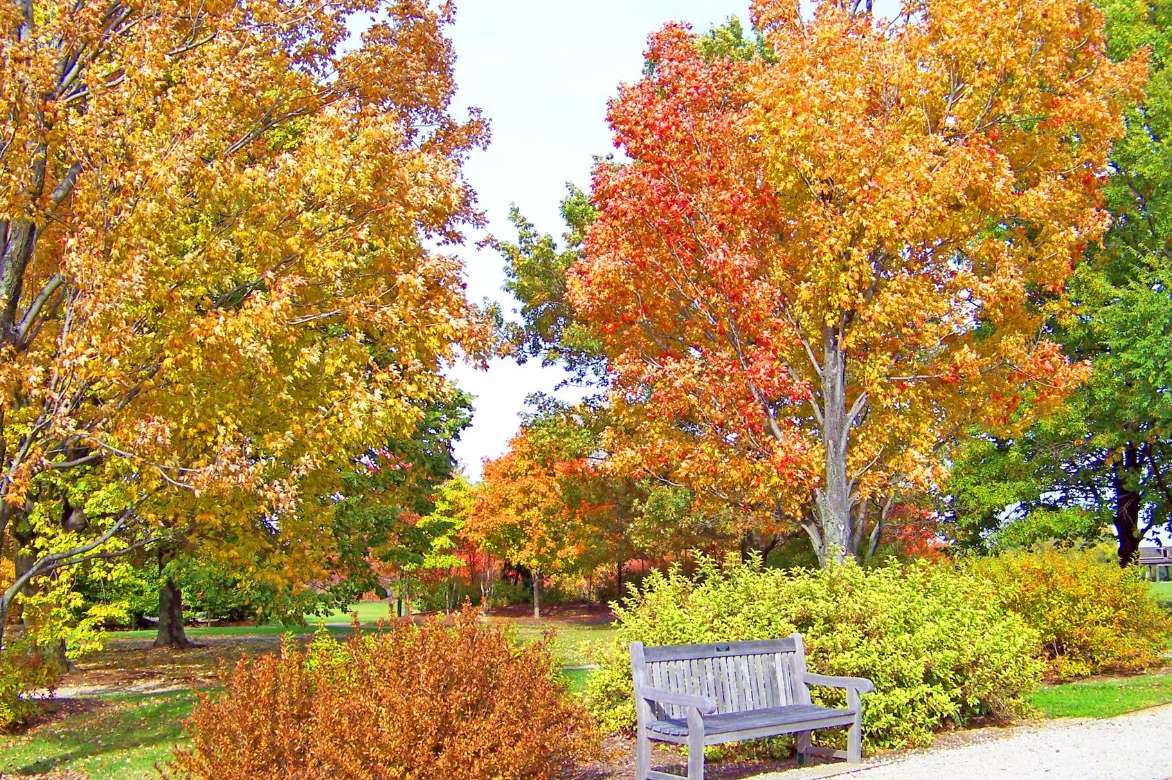
When to plant?
Plant in autumn preferably to encourage good growth of the root system, especially if young plants are bare roots. Spring planting of container-grown young plants is also possible with increased control of watering.
How to plant?
This plant is easy to grow.
- Dip the root ball into a bucket of water to thoroughly moisten it or apply a pralin to bare roots.
- Dig a hole three times wider than the root ball and loosen soil around with tines of a garden fork.
- In heavy soil, add a few shovelfuls of sand and grit to ensure good drainage around the roots.
- Add well-rotted manure or compost if soil is poor.
- Place plant in the planting hole.
- Place stakes and replace soil, firming lightly with the foot and forming a saucer-shaped basin.
- Water generously to eliminate air pockets.
→ Learn more in our tutorial : How to plant a maple?
Read also
6 remarkable MaplesCare and pruning of maples
Keep soil moist during the first two summers after planting. Mulching can help keep soil cool.
Maples do not really need pruning apart from removing dead or crossing wood and gradually raising the crown by cutting low branches on the trunk. Carry out pruning between December and February to gain a clearer view of the tree’s silhouette and before the fairly early sap rise, or in June to promote wound healing.
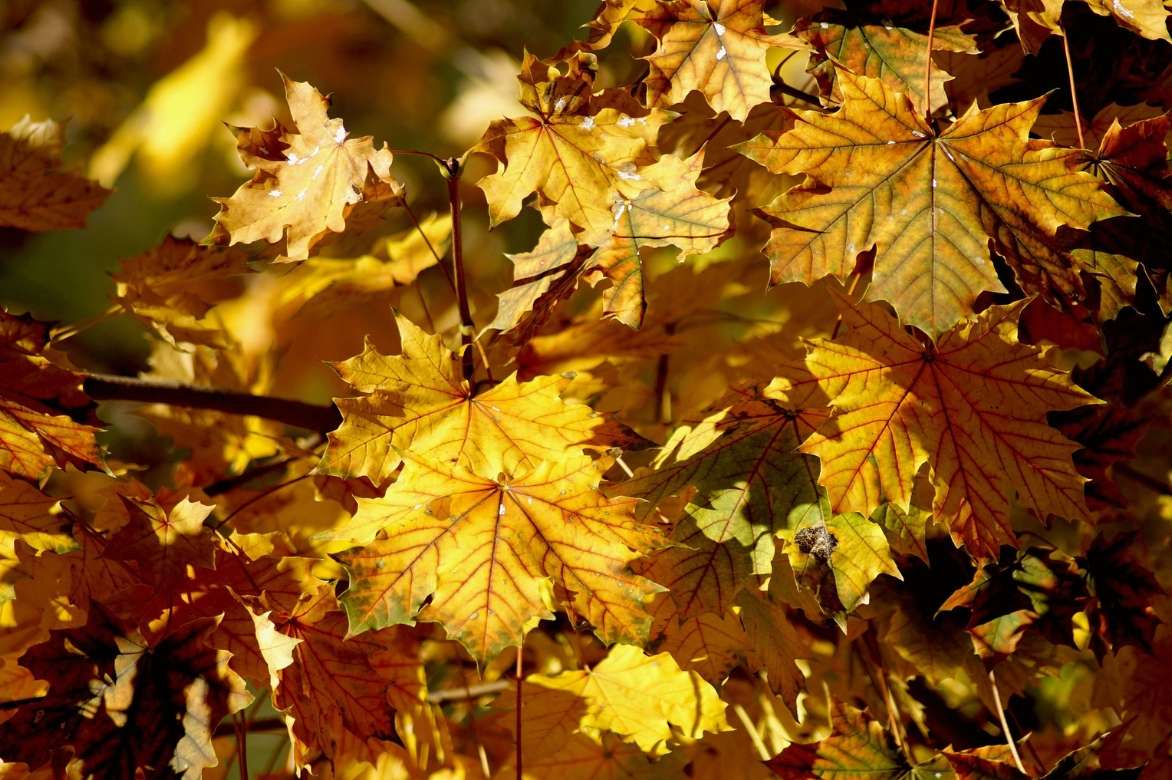
Add compost around the base each autumn when tree is young or if grown in a pot.
These maples are not very susceptible to diseases and pests.
Propagation: layering and sowing
The simplest propagation method is to perform air layering on cultivars, as grafting requires a certain level of skill and propagation by cuttings is delicate.
Air layering
In April–May, when vegetation resumes most vigorously, choose a branch 2–3 cm in diameter and strip the bark over a 3 cm length.
Surround the wound with moist moss to form a sleeve, wrapped in a sheet of transparent plastic and secured with raffia at both ends.
After 1 or 2 years, sever the layer by cutting the rooted trunk section, which you grow in a pot in a spot sheltered from wind for an additional year before planting.
Sowing
Lift natural sowings you can find nearby or sow seeds in autumn in a nursery so they undergo winter cold.
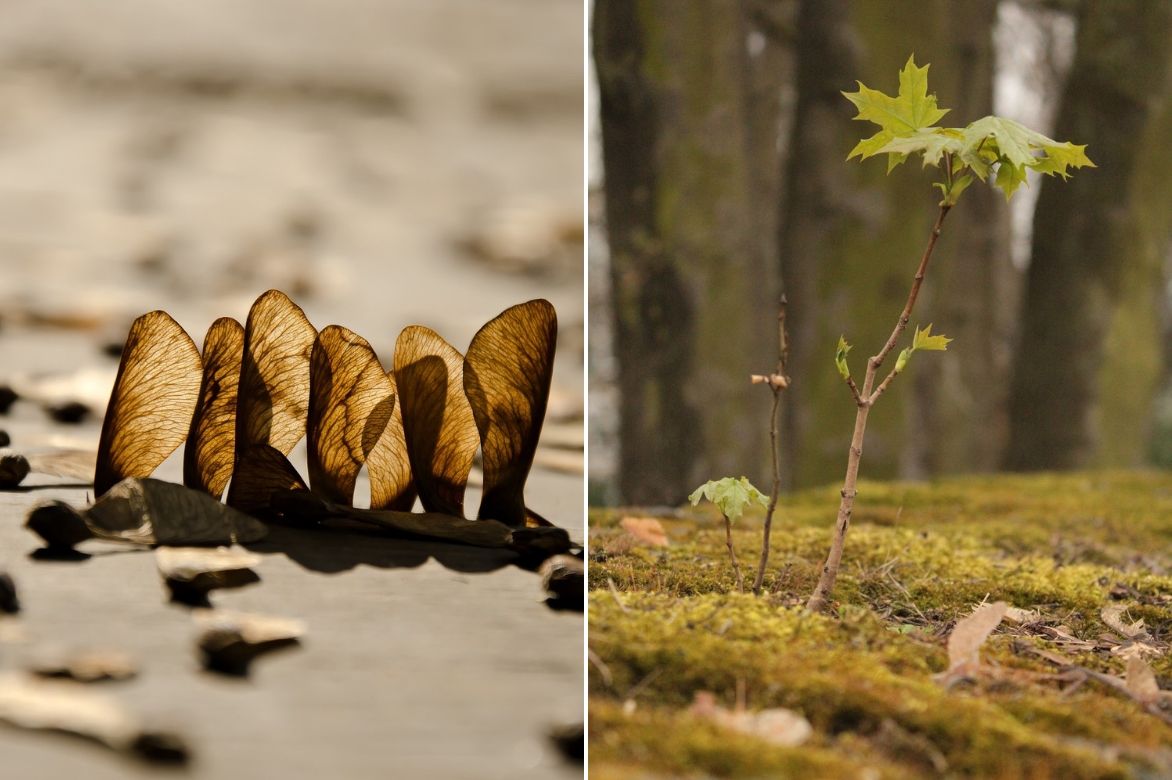
fruits containing seeds / natural sowing
Uses and plant associations in the garden
Large maples such as sycamore or Norway maple make excellent shade or avenue trees, splendid in autumn, but less interesting during other seasons than Asian maples with mottled bark, for example, which also produce coppice shoots. Acer platanoides ‘Drummondii’ is slightly less imposing than species type, with cream-edged foliage that can be paired in an avenue or small wood with its purple-leaved counterpart, Norway maple ‘Crimson King’, with a purple beech or with Cercis canadensis ‘Forest Pansy’, for example.
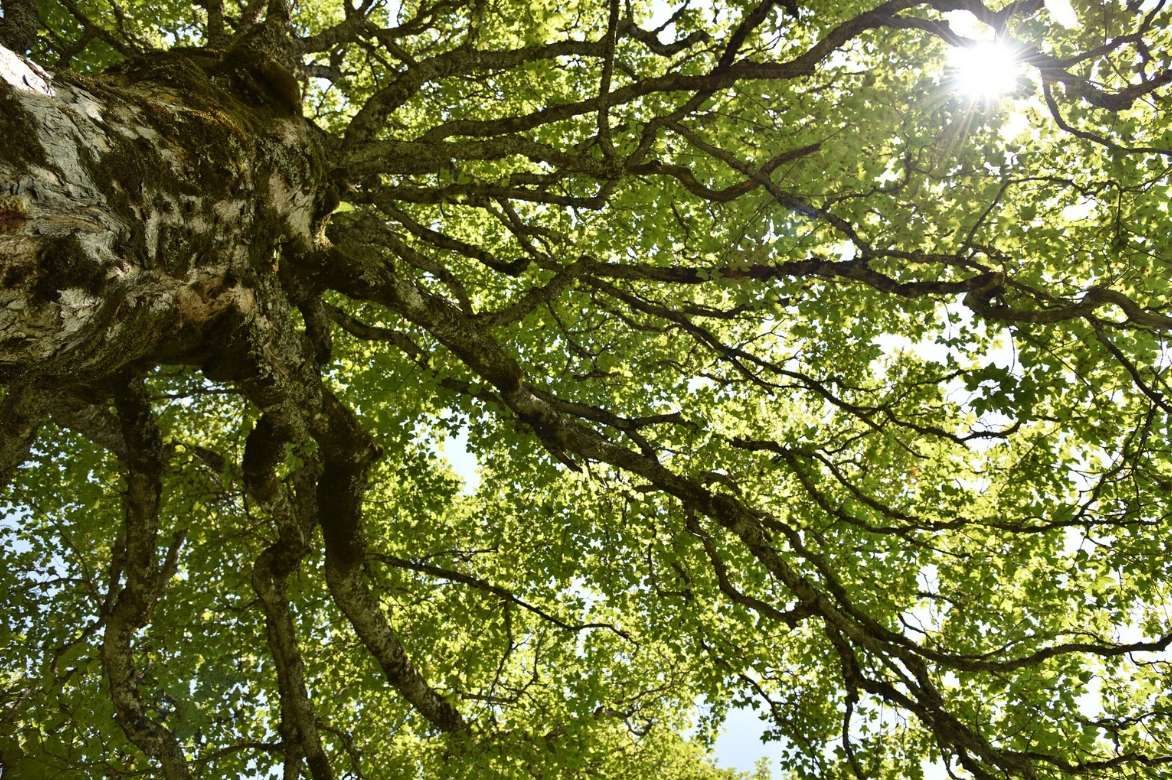
Sycamore maple (Acer pseudoplatanus)
Small- and medium-sized maples such as Acer negundo ‘Flamingo’ can be planted at the foot of larger trees to create an intermediate-height screen, with pruning if you want to keep them more compact. Cream-variegated foliage also brings a bright accent to areas that are a little too green in the garden and can provide a lovely contrast alongside a purple hazel or a Black Lace elder. Flamingo maple, whose appearance is comparable to variegated willow ‘Hakuro Nishiki’, has advantage of being much less demanding in water.
Small trees requiring partial shade and fresh humus-bearing soils such as Acer capillipes, A. triflorum, A. ginnala fit easily into heather-soil beds in a humid climate. They can form the central element of a bed with a low-key carpet of perennials at their feet such as hostas, ferns or bleeding hearts, or azaleas. In drier conditions, choose less demanding perennials such as Lamium, Epimedium, Geranium macrorrhizum, Ophipogon planiscapus ‘Niger’…

An example of a planting scheme: Acer griseum, Alchemilla mollis, Heuchera micrantha ‘Palace Purple’, Hosta ‘Sum and Substance’ and Geranium ‘Dilys’
Acer campestre or A. monspessulanum, depending on climate, are part of our landscapes, which perhaps explains why we sometimes stop noticing them… until autumn, when they set countryside alight with golden tones. Really easy to grow, they thrive in any ordinary soil, even calcareous, provided it is deep enough, and blend perfectly into a hedgerow alongside deciduous euonymus, Carpinus ‘Orange Retz’, Cotinus, hawthorns, ornamental apple trees…
Further reading
Discover :
- our wide range of maples
- our video : Acer ginnala
- Our advice sheets : 6 remarkable maples, lesser-known maples, 6 Japanese maples with green foliage, and 7 maples with variegated foliage
- Our tutorial : Maple pruning: steps to follow
- Oliver’s video on Acer triflorum
- Olivier’s video on Acer davidii or snakebark maple
- Olivier’s video on Acer griseum or paperbark maple
- Subscribe!
- Contents
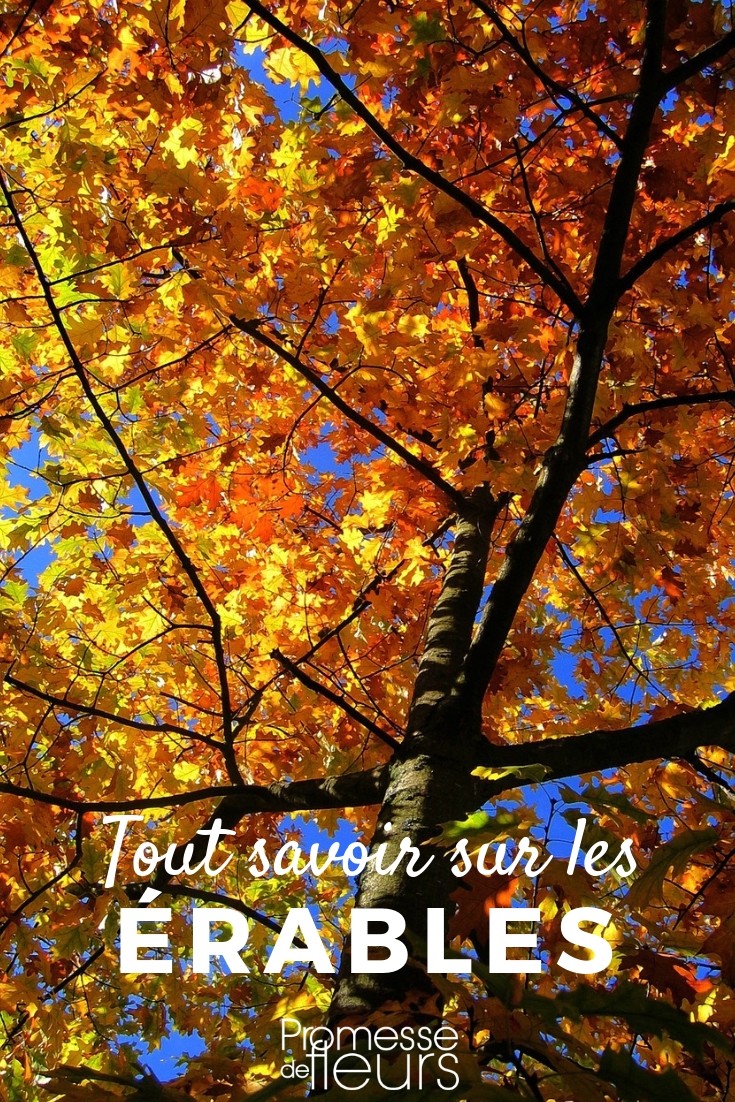
































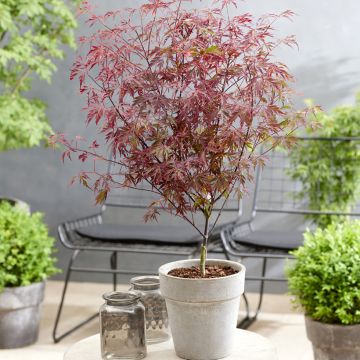
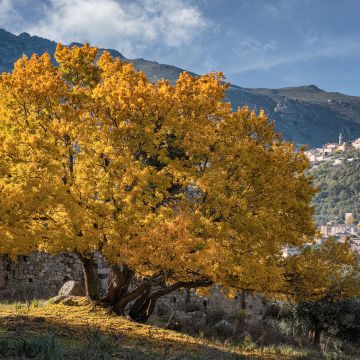

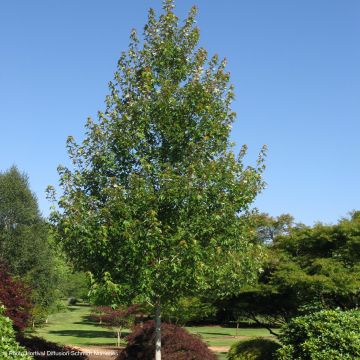
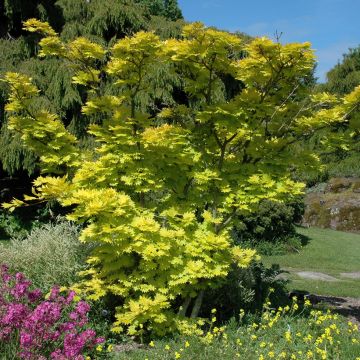
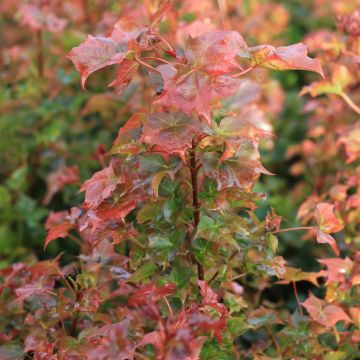
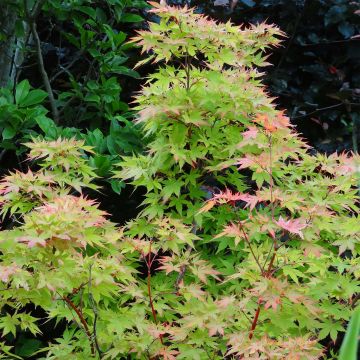

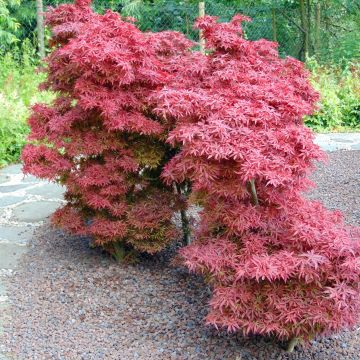
Comments